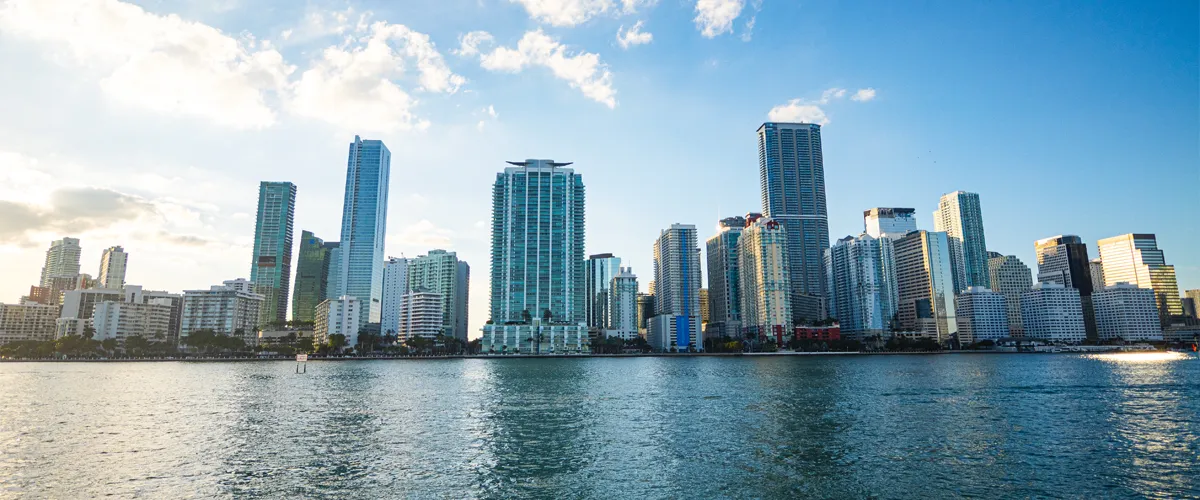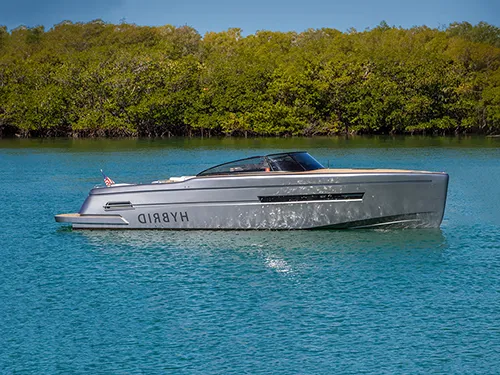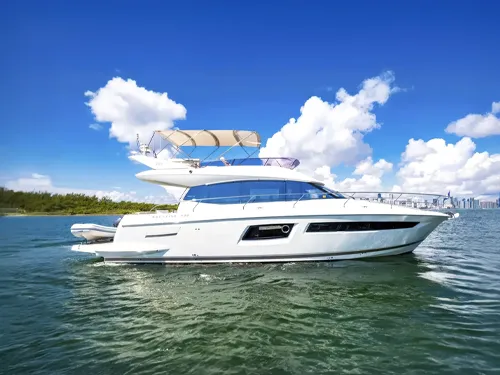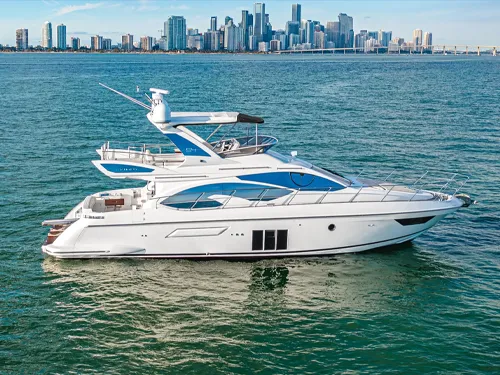Interesting Facts About Miami

-
Miami isn’t just about endless beaches and breathtaking ocean views — it’s a vibrant city where history beautifully blends with modernity. Every year, millions of visitors are drawn to this resort metropolis to soak in its distinctive atmosphere. Yet, beyond its famous attractions, Miami holds a treasure trove of fascinating secrets that make it even more extraordinary.
The First Pages of Miami’s History
The first European to explore the waters and lands of what is now Miami was the Spanish conquistador Juan Ponce de León, who arrived in Biscayne Bay in 1513. His records mention a place called Chequescha, which is the earliest recorded name for Miami. However, it remains uncertain whether Juan Ponce de León actually set foot on its shores or interacted with the local inhabitants.
The first European known to have set foot on the shores of what is now Miami was the Spanish conquistador Pedro Menéndez de Avilés. In 1566, he visited the Tequesta settlement while searching for his son, who had been shipwrecked a year earlier. Pedro Menéndez de Avilés is also renowned for founding St. Augustine in 1565, the first permanent European settlement in Florida, which still exists today.
The lands of what is now Miami were inhabited by the small Mayaimi tribe from the beginning of the Common Era until around the 17th or 18th century. The city’s name was later derived from this tribe. The tribe’s name is linked to a nearby lake, also called Mayaimi, which literally translates to “big water” in the Mayaimi, Calusa, and Tequesta languages. Today, this lake is known as Lake Okeechobee, which also means “big water,” but in the Hitchiti language.
The Founding of Miami
The founding of Miami in 1896 is itself a fascinating chapter in history, filled with captivating facts.
In 1891, Julia Tuttle, originally from Cleveland, Ohio, expanded her holdings to 640 acres by acquiring a large citrus plantation. After securing this new land, Tuttle sought to convince Henry Flagler to extend the Florida East Coast Railway to Miami. However, her initial efforts were met with refusal.
In the winter of 1894, Florida experienced abnormal cold snaps that destroyed nearly the entire citrus crop. However, the Miami area remained unaffected by the frost, and Tuttle’s plantation was the only one whose fruits successfully reached the American market. Seizing this opportunity, Tuttle approached Flagler once more, and this time he agreed to extend the railway to Miami and construct a resort hotel there. By 1896, the first train, with Flagler himself on board, arrived in Miami.
On July 28, 1896, following a vote at a joint meeting, Miami was officially granted city status. Voting rights were extended to all men residing in Miami and Dade County. After the affirmative decision, the city government was established, the official name “The City of Miami” was adopted, and its boundaries were defined. At the time, the city’s population consisted of just 444 residents.
Miami is the only major city in the United States that was founded by a woman.
Interesting facts about Miami
Let’s take a closer look at some of the most interesting facts about Miami.
-
Miami Beach’s Man-Made Shores
The South Florida area is known for its vast wetlands, and nearly all of the land where the city now stands has been artificially altered and transformed by humans. During the creation of Miami Beach, extensive drainage and land reclamation projects were carried out, with sand being used to form the beautiful beaches that have become one of the region’s main attractions. However, due to natural factors such as erosion and the impact of ocean waves, some of these beaches require regular sand replenishment to maintain their appeal and functionality.
-
Miami’s 1980s Growth and Drug Money
During this period, the city saw significant development, largely driven by profits from drug trafficking, primarily from South America. These illicit funds were used to build and develop Miami, laying the foundation for the city we see today.
-
South America’s Financial Hub
Once known primarily for its tourism and cultural allure, Miami has emerged as South America’s financial hub. Today, it’s not just a top destination for visitors; it’s a thriving financial center. Home to the largest concentration of international banks in the United States, Miami’s economic power and global significance continue to grow.
-
World Capital of Art Deco
Miami Beach stands as the global capital of Art Deco architecture. In 1979, the city’s historic district, part of the Miami metropolitan area, was added to the National Register of Historic Places for its architectural significance. Home to over 800 Art Deco buildings built between 1923 and 1943, it holds the largest collection of this iconic style, which epitomizes the glamour and elegance of the early 20th century.
-
The Only U.S. City Located Between Two National Parks
Miami is the only United States city located between two national parks: Biscayne and Everglades. Biscayne, situated along the coast, is renowned for its coral reefs, picturesque islands, and rich marine life. In contrast, Everglades is famous for its expansive wetlands and diverse wildlife. Additionally, the nearby Big Cypress Swamp is home to rare species, including the endangered Florida panther.
-
The Birthplace of Sunscreen
In 1944, pharmacist Benjamin Green developed a groundbreaking product that would forever change the sun care industry. His creation, Coppertone Suntan Cream, was the first lotion specifically formulated to promote tanning, paving the way for the modern sunscreen market.
-
The First Burger King
In 1954, Miami became home to the very first restaurant of the now world-famous fast-food chain Burger King. Just three years later, the company introduced its signature Whopper burger, originally priced at just 37 cents. Today, Burger King’s global headquarters remains in Miami, serving as the heart of its expansive international network.
-
The World’s Largest Cruise Port
Miami proudly holds the title of the “Cruise Capital of the World,” boasting the largest cruise port on the planet. Serving as a central hub for the global cruise industry, Miami is home to numerous major cruise lines, including Royal Caribbean International, Celebrity Cruises, Norwegian Cruise Line, Oceania Cruises, Regent Seven Seas Cruises, MSC Cruises, Carnival Cruise Line, Explora Journeys, Holland America Line, Virgin Voyages, and many others.
-
One of the Largest Spanish-Speaking Hubs in the United States
Miami serves as a major Spanish-speaking center, hosting the headquarters of influential companies like Univision, Telemundo, and TeleFutura, along with numerous production studios. As of 2015, over 70% of the city’s residents spoke Spanish as their primary language. In Miami, Spanish is more than a language—it’s an essential part of daily life and business, making it one of the few cities in the U.S. where fluency in Spanish is often indispensable for career and commercial success.
-
The Tragic Death of Gianni Versace in Miami
On July 15, 1997, renowned Italian fashion designer Gianni Versace was tragically shot and killed on the steps of his opulent mansion, Casa Casuarina, in Miami Beach. Returning home from a walk along the iconic Ocean Drive, Versace was approached by Andrew Cunanan, who fatally shot him in the back. This shocking event sent ripples through the worlds of fashion and art, becoming one of the most infamous celebrity murders in history.
Casa Casuarina, once a symbol of Versace’s extravagant lifestyle, gained further notoriety after his death. Today, the mansion houses Gianni’s, a restaurant that attracts Versace fans and tourists alike. Retaining elements of its original grandeur, the venue serves as both a tribute to Versace’s legacy and a reminder of the tragic event that marked its history.
-
Snowfall in Miami
January 19, 1977, is etched in Miami’s history as the day nature defied all expectations. On this extraordinary occasion, snowflakes graced the typically sun-soaked streets, creating an unforgettable scene. This remarkable event remains the only recorded instance of snowfall in Miami’s meteorological history, leaving both residents and visitors in awe of this rare and unprecedented phenomenon.
Miami is a city that continuously surprises with its diversity. From rare natural phenomena to significant historical events and cultural landmarks, every aspect of its story contributes to the uniqueness of this place. Exploring fascinating facts about Miami reveals that it’s not just about beaches and skyscrapers, but a boundless source of inspiration, where the past and present blend into a vibrant mosaic of experiences.
If you’re looking for an unparalleled view of Miami’s captivating beauty, our Biscayne Bay yacht tour provides a unique perspective, unveiling the city’s hidden gems and iconic landmarks from a fresh, captivating angle.
-


